Gun Writer Josh Wayner talks about and shoots the SIG SAUER M11-A1 9mm pistol putting it through a 1,000 round test at the range.
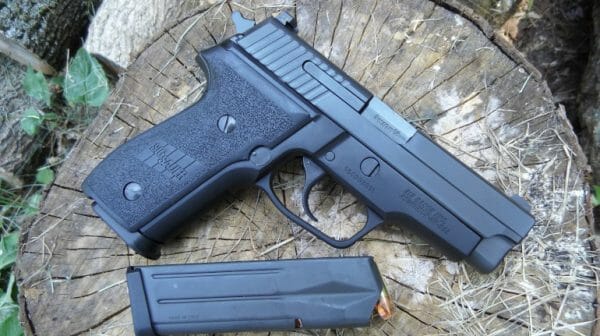
GRAND RAPIDS, MI USA -(Ammoland.com)- The SIG SAUER M11-A1 is a pistol that has existed in both the shadows and the spotlight of today’s military scene. In this review, I put the commercial version of the legendary pistol through its paces and talk about where its place will be in your gun safe or carry belt.
SIG Sauer M11-A1 Pistol
The evolution of the M11-A1 has its origins in the original XM9 trials of the 1980’s, the same trials that saw the adoption of the Beretta M9. Although it is classified as a member of the P229 family today, the original M11 was a P228 and had a slimmer frame and accepted 13 round mags, as opposed to the 15 rounders shipped with the modern M11-A1. There are too many manufacturing variances between the military models like the M11 and M11-B and the current M11-A1 to cover here, but know that this is about as close to a military variant as you can get without breaking the bank on a certified government pistol.
Getting down to brass tacks, the M11-A1 is a hammer-fired semiautomatic that features a double/single action trigger with a decocker. This is a fairly common feature on many SIG pistols that are meant for duty and military service. To load, simply chamber a round and push down on the decocking lever, which allows for the trigger to disengage and the hammer to come to rest. The gun has no manual safety and it relies on the weight of the double-action pull for safe carry.
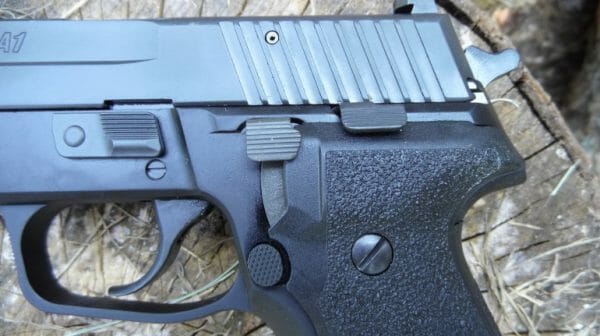
So what exactly does the M11-A1 offer over other pistols like the P226 or P320?
They all share the same military heritage to a degree, but none are exactly 1:1 clones of the military models, which makes them a second choice for military collectors. The M11-A1 is unique in that it has military features, but is not a true military model. To add to the complex story of this pistol, it is essentially being replaced in one form or another by the P320 and variants in service, again making it less desirable for a collector.
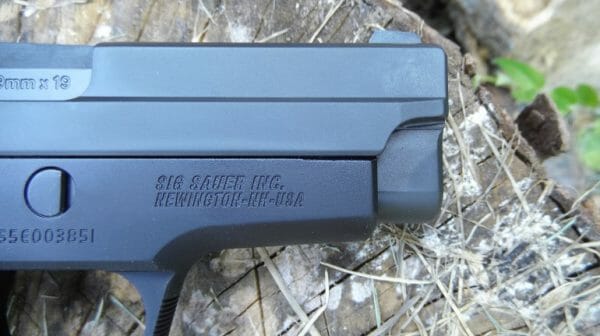
For the everyday shooter, the M11-A1 is a bit of an enigma. It has all the necessary good features for an everyday carry pistol in that it has a relatively short 3.9” barrel, smooth corners, a compact grip, and a 15+1 capacity, but the all-metal construction makes it weigh more than a comparable polymer framed pistol. This isn’t really noticeable when on the hip, but it is a consideration.
The real advantages of the M11-A1 aren’t in its military heritage, but in the benefits it offers to a modern concealed carrier and range enthusiast. This is an excellent pistol for rough and dirty environments, it is quick to get into action and has a very low possibility of accidental discharges thanks to the heavy double action pull of the first shot. It also displays superior accuracy to most polymer framed guns due to its exceptional single-action trigger and precision fit parts.
The questions I have received about this pistol weren’t unwarranted. I was asked if it was the gun carried by the military, to which I said no. When asked if it was as good or better, I had to decline to answer as the M11-A1 isn’t the same thing as a MK25 or a true M11. It is a good in-between that bridges the gaps in the P228, P229, and P225 lines and does more than most of them without sacrificing size, capacity, and accuracy. I was also asked about the sticker on the frame of the gun, which is something of a ‘smart’ tag in that it has a QR code on it along with some information about the gun. This isn’t a metal plate, but rather a durable sticker that adds to the cool factor of the gun. The serial number is also engraved elsewhere on the frame.
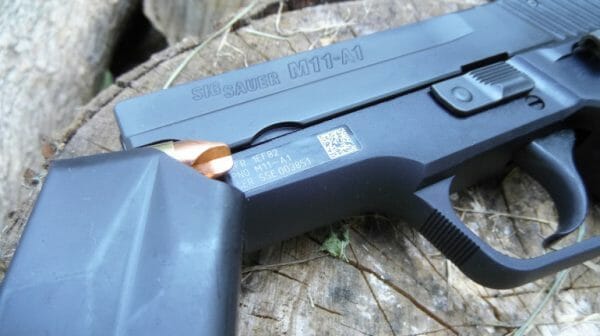
I put the M11-A1 through a rigorous amount of shooting with many, many kinds of ammunition to the tune of nearly 1,000 rounds. I had no instance of failure to feed, fire, or eject. The gun was 100% reliable from the minute I took it out of the box at the range to the present. Not only was it reliable, but it was very accurate on paper and steel. My average group at 25 yards from the bench came in at 3” with all types of ammunition. Specific loads like Black Hills Honey Badger 100gr +P dropped groups into the 1.5” range at 25 yards. The M11-A1 is an outstandingly accurate pistol.
Ammunition was tested at a range of 25 yards from a rest. Accuracy is the average of two five-shot groups fired at the same distance. Velocity was recorded over an Oehler 35P chronograph at 90 degrees Fahrenheit.
- SIG SAUER 115gr V CROWN ——————– 1210fps, 3.5”
- SIG SAUER 124gr V CROWN ———————1195fps, 2.8”
- Black Hills 115gr FMJ——————————1125fps, 3.1”
- Black Hills 100gr +P Honey Badger————-1220fps, 1.7”
- Buffalo Bore 147gr Outdoorsman————–1010fps, 3.5”
- Buffalo Bore Barnes 95gr +P+ ——————-1471fps. 1.9”
I had some local veterans fire the M11-A1 while I was at the range with it and they all commented on how much better of a gun it was than both the M9 and the military issue M11. The main area of concern was the trigger, the SIG SRT, which they found to be a substantial improvement over the issue triggers.
If you are in the market for a solid, reliable, and accurate pistol that has the added safety features of a DA/SA trigger, the M11-A1 is a worthy contender. It ships with three 15-round magazines, night sights, and out-of-the-box confidence, plus a very durable finish. The trigger does take some getting used to if you have been spending your time around striker-fired pistols, but the advantages are well worth the learning curve. Head to your local SIG dealer to check out his great pistol.
Go to www.sigsauer.com to check out the M11-A1 and the SIG ammunition like. For the other ammunition in this article, visit www.buffalobore.com and www.black-hills.com.

About Josh Wayner:
Josh Wayner has been writing in the gun industry for five years. He is an active competition shooter with 14 medals from Camp Perry. In addition to firearms-related work, Josh enjoys working with animals and researching conservation projects in his home state of Michigan.

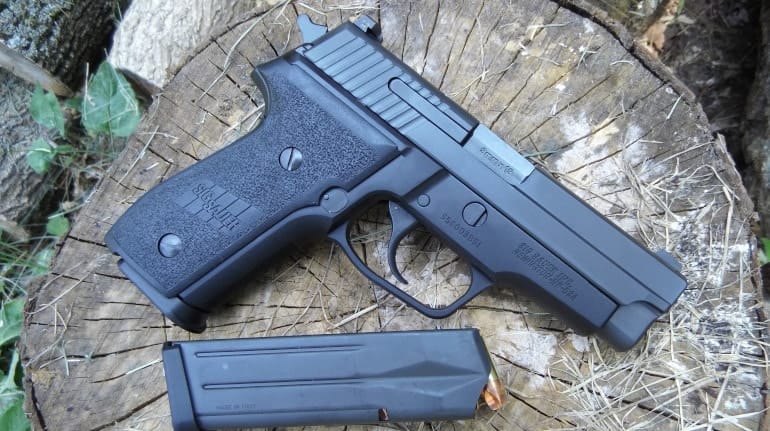
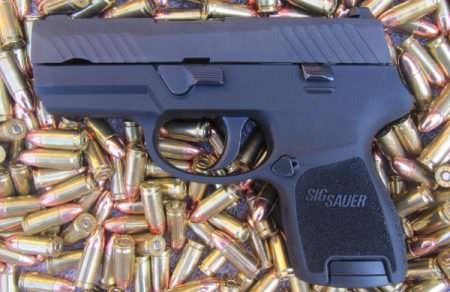

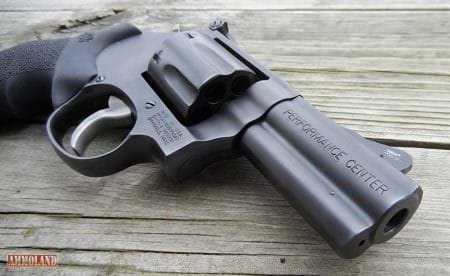

I personally own several Sig pistols, some of the older West Germany made pistols. I think these are much better made than the U.S. made pistols. All of them work with every factory ammunition I’ve ever used. Some ammunition is more accurate than others. That’s normal with any firearm. I own 2 of the 320 pistols. Both of these work just fine. It’s easy to see why this pistol was chosen. I like and use a Gen. 5 Glock 19 for my EDC. Light, Compact, 100% reliable, accurate. Fits my hand perfectly. This is why the polymer pistols are so… Read more »
@Albbac2 the slide is steel, the frame is aluminum.
Described as “all metal”. Does that mean all steel or some combination of steel and other metals?
My M11-A1 has been my everyday carry for the last 4 years. It has thousands of rounds through it from the range and has never failed the fire or feed. It’s comfortable to carry owb. The only change I made to it was with the grips, I put on Crimson Trace laser grips. Very nice compliment to the Sig sights.
Thanks for the article. Many people bad mouth sig. i have several. a 220 in 45, 225 9mm, and a 228 that i used to start shooting idpa. If you train with it the da/sa transition is a non-issue. They are all excellent pistols and the 228 in thousands of rounds has never had a failure of any kind. It will eat anything. Its a shame sig didnt get the bid when baretta did.
It all comes down to the cost per unit. The Sig 226, Beretta 92 and the S&W entry all finished about even. Having been involved in the testing process while in the Marine Corps I can tell you this first hand. All the fairy tales about politics and payoffs are tin foile hat stuff. S&W, Sig and Beretta have given pistols to lawenforcement just to get them on the streets. They very well know that every weapon They sell or give to any Government or Lawenforcement agency they will sell 25 of on the commercial market place. 60% of Americans… Read more »